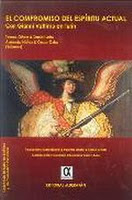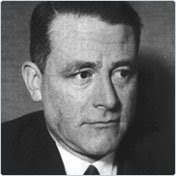Santiago Zabala
Perhaps rather than God, as Martin Heidegger once said, it is art that can save us. After all, artistic creations have always had political, religious and social meanings that also aimed in some way to save us. Certainly, they also express beauty, but this depends very much on the public's aesthetic taste, which varies according to the cultural environment of each society. But when the political meaning is manifest, aesthetics (our sensations and taste) lose ground in favour of interpretation (knowledge and judgment); that is, instead of inviting us to contemplate its beauty, a work calls us to respond, react and become involved. As it turns out, art - as a channel to express reactions to significant issues - has sometimes worked better than historical or factual reconstructions.
 |
| Picasso's Guernica |
Pablo Picasso's Guernica is the example we all have in mind: painted as a response to the Spanish nationalist forces' bombing of a town in the Basque country, it was used not only to inform the public but also as a symbol of all the innocent victims of war. This is probably why "aesthetics", a term coined by the German philosopher Alexander Baumgarten in 1735, refers not only to the study of art but also to sensory experience coupled with feelings regardless of the nature of its object. But can contemporary art, whether through music, conceptual installations or cinema actually save us from the damned circumstances, atrocities and injustices we live among?
.jpg) As an ontological discipline, philosophy must always pay attention to existential claims, whether they come from science, religion or art. Even though this is now possible, since philosophy (and aesthetics) has overcome metaphysics, that is,
objectivist-representational nature (which also limited art's creations), not
all philosophers pay attention to the claims these works make.
If such distinguished thinkers as Arthur Danto and Gianni Vattimo have moved beyond aesthetic representationalism and formalism, it is because of their
post-metaphysical positions but also their interest in art's current
existential appeal. Both philosophers seem to agree that the end of art
proclaimed by Hegel is not simply a matter of art becoming conceptual - that
is, "philosophical". Rather, the radical changes brought about in the
advent of global society mean that the artist today must respond to a wider
public than in the past, one that is concerned with the same global issues that
affect the artist.
As an ontological discipline, philosophy must always pay attention to existential claims, whether they come from science, religion or art. Even though this is now possible, since philosophy (and aesthetics) has overcome metaphysics, that is,
objectivist-representational nature (which also limited art's creations), not
all philosophers pay attention to the claims these works make.
If such distinguished thinkers as Arthur Danto and Gianni Vattimo have moved beyond aesthetic representationalism and formalism, it is because of their
post-metaphysical positions but also their interest in art's current
existential appeal. Both philosophers seem to agree that the end of art
proclaimed by Hegel is not simply a matter of art becoming conceptual - that
is, "philosophical". Rather, the radical changes brought about in the
advent of global society mean that the artist today must respond to a wider
public than in the past, one that is concerned with the same global issues that
affect the artist.
After the eras of "imitation" and "ideology", when artists were often commissioned for their work, we have now entered the era of "existential claims", where we, the viewers, are the ones called to respond. Although this began in 1917 when Marcel Duchamp revealed his Fountain (to point out how any "readymade" could become a work of art if placed within the walls of a museum), there are some new examples of (as Danto and Vattimo would probably call them) "transfigurations of our common places" for "existential claims of truth", that is, art that is determined to save us.
But what here is transfigured and claimed? If listens to Tom Waits' The Road to Peace or watches Alfredo Jaar's Rwanda Project or Daniele Viccari's Diaz: Don’t Clean up this Mess, it is difficult to remain simply (aesthetically) satisfied since they involve us at an existential level. But this is not because they simply narrate the truth of ongoing events (the Palestinian-Israeli conflict, the 1994 Rwanda genocide and the brutal police violence against the 2001 G8 protesters in Genoa) in a more objectivist way than we are accustomed to, but rather because they demand that we take a stance in a process of transformation, which is vital for our future. Rather than points of arrival for consumers' contemplation of beauty, they are points of departure to change the world, a world that needs new interpretations instead of better descriptions.
While some might consider these works excessively politically correct, it is difficult to ignore their interest in our salvation. But salvation from what? If there is a "transfiguration"(in music, photographs, film) of our "commonplaces" (conflict, genocide, violence) in these three works, it does not come only from the creative energy in the composition but also because these commonplaces have become much too common. If we have become so accustomed to these events that we take them for granted, then art is saving us from discrimination, forgetfulness and annihilation. It should not come as a surprise that Hans Georg Gadamer’s greatest concern was to emphasise how art, just as science, also manifests claims of truth.
The only difference between them is their requirements: while science will remain satisfied with propositional truths (information regarding the state of things), art demands we enter into dialogue with the work. This is why the German master believed so much in the capacity of hermeneutic philosophy (concerned with the interpretative nature of human beings) to stimulate further interest through interpretation. If "being", that is, our existence, were affected only by propositional truths, not only art would be useless but also the variety of information networks that are the cornerstone of democratic institutions. Waits, Jaar and Viccari call their audiences to respond and also to intervene practically - and this, an involvement in the shocking commonplace atrocities of the world, is necessarily existential.




































0 comentarios:
Publicar un comentario